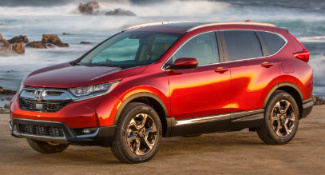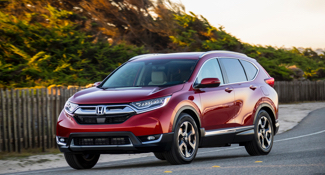
2018 Honda CR-V Review
The 2018 Honda CR-V is a compact SUV that competes with the Toyota RAV4, Subaru Forester, Ford Escape, VW Tiguan, and Chevrolet Equinox.

The 2018 Honda CR-V is a compact SUV that competes with the Toyota RAV4, Subaru Forester, Ford Escape, VW Tiguan, and Chevrolet Equinox.

Check out the 2018 Honda CR-V from every angle, including interior and exterior photos.

The CR-V compact crossover is Honda’s most popular model, offering all-wheel-drive, a new turbocharged engine and the HondaSensing safety tech. But is it the most well-rounded competitor in the segment?